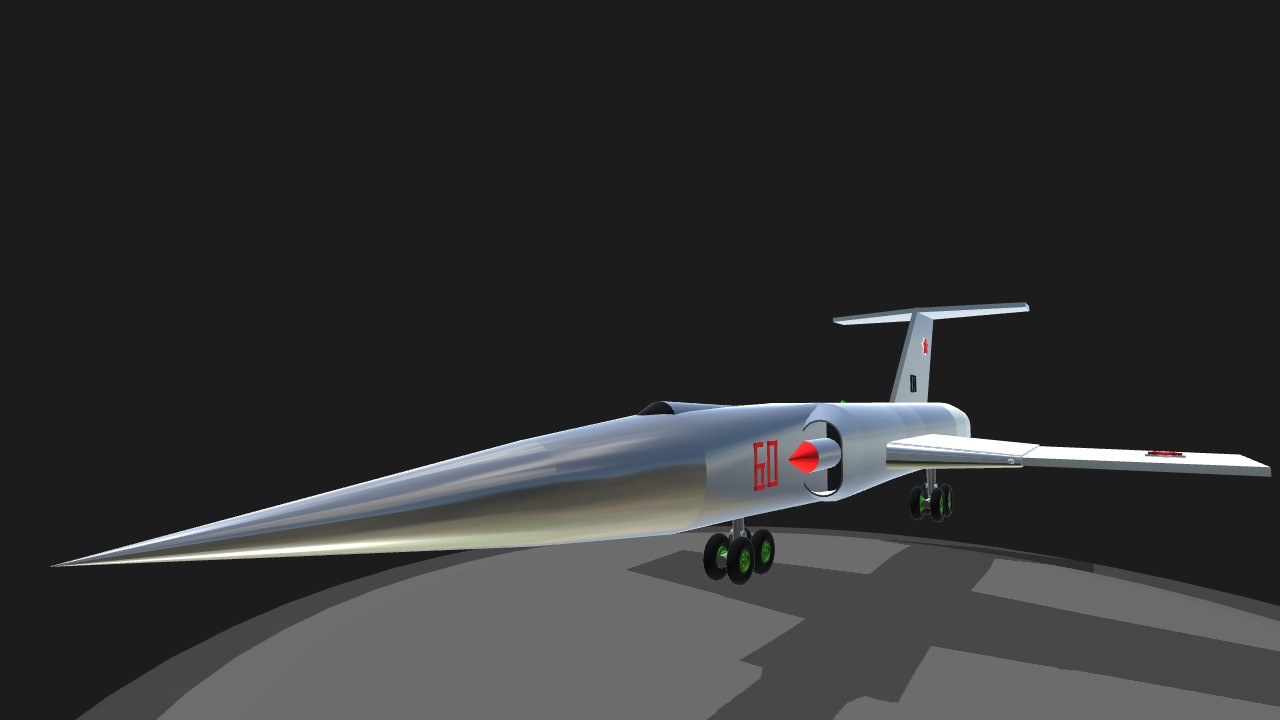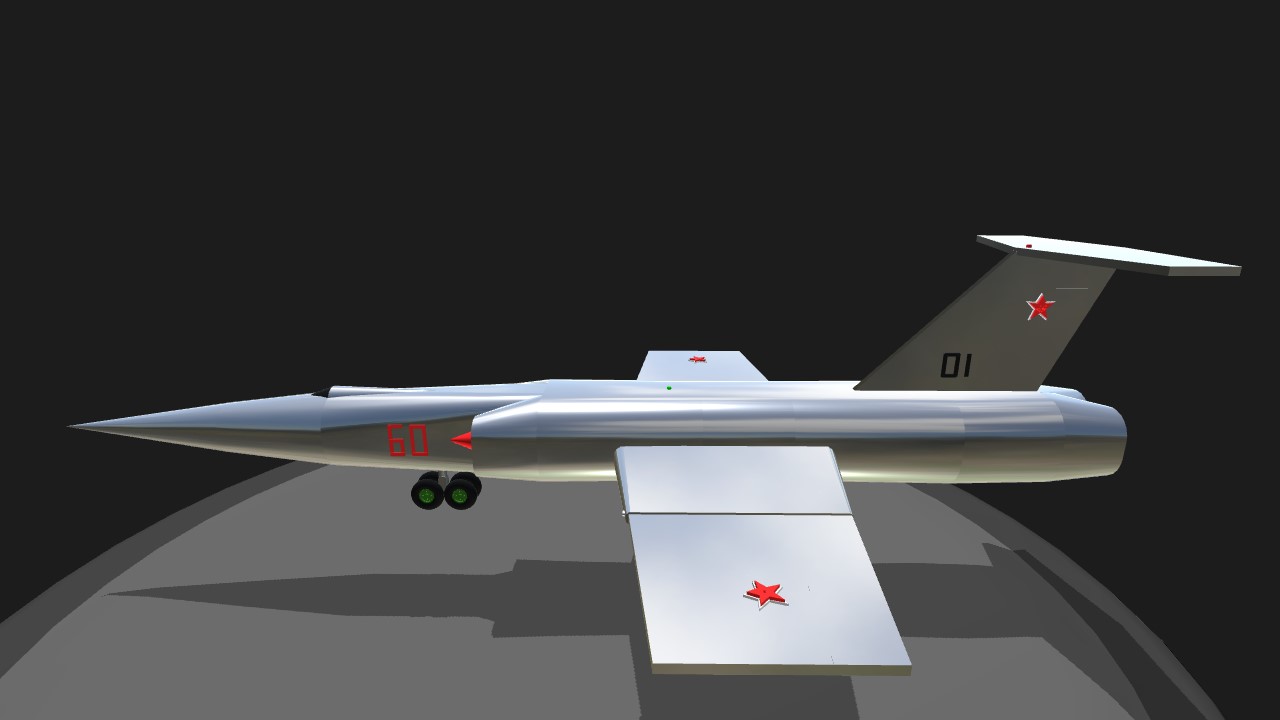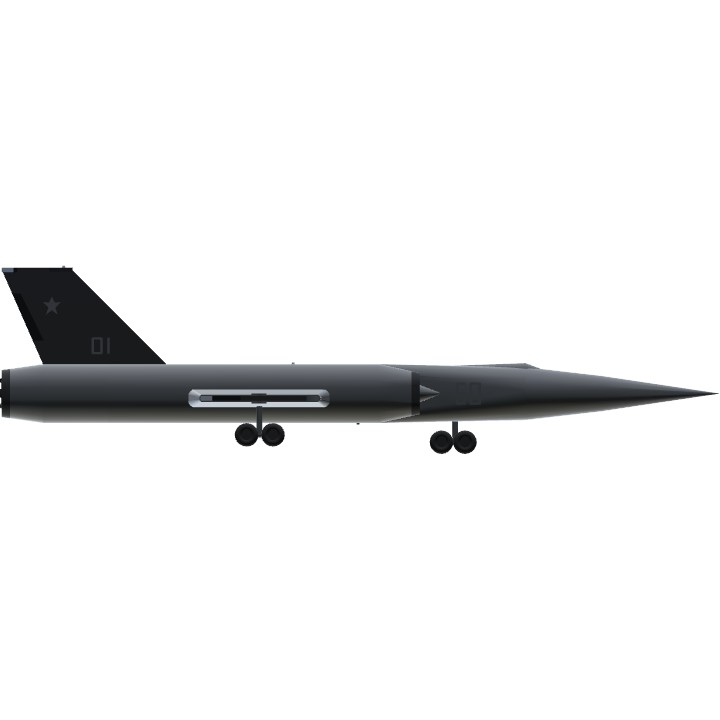( English version at the bottom of the page )
Le Myasishchev M-60 est une étude de bombardier à propulsion nucléaire soviétique .
Cet avion est similaire au prototype M-50.
Myasishchev a reçu l'ordre de commencer le développement du M-60 le 19 mai 1955 .
En raison du rayonnement induit par le réacteur, l'équipage était toujours dans un caisson étanche
avec une fenêtre sur le côté . Plus précisément, les concepteurs ne voulaient pas vraiment voir des pilotes
dans l'avion , ils ont donc imaginé des opérations complètement automatiques . Ils avaient une bonne raison , car
ils pouvaient économiser beaucoup de poids sur la radioprotection de l'équipage . La structure de la machine
aurait été simplifiée , les coûts supplémentaires et l'encombrement des instruments auraient pu disparaître.
Mais l'armée de l'air a insisté pour que les pilotes diriges l'avion. Par conséquent, des périscopes et un système
de caméra étaient nécessaires , Les ingénieurs ont continué à proposer l'exécution de certaines tâches de combat par
contrôle automatique. La cabine entièrement fermée a été conçue pour fournir de l'air artificiel stocké à l'état
liquide au lieu de l'air extérieur. Plusieurs études ont été faites avec ou sans poste de pilotage traditionnel .
Décollage volet a fond . Correction au palonnier nécessaire . Attention , les réacteurs ont un temps de latence important .
Il est nécessaire d'anticiper le réglage de la puissance .
La version présentée posséde un cockpit . Réalisé d'après un dessin du prototype .
Touche 1 : Moteur droit .
Touche 2 : Moteur gauche .
Touche 3 : Feux de positions .
Touche 4 : Feux d'atterissage .
Touche 5 : Parachute de queue .
Trim : touche VTOL .
English version :
Myasishchev M-60 is a Soviet nuclear-powered bomber study.
This aircraft is similar to the M-50 prototype.
Myasishchev was ordered to begin development of the M-60 on May 19, 1955.
Due to the radiation induced by the reactor, the crew was still in a watertight
with a window on the side. Specifically, the designers did not really want to see drivers
in the plane, they imagined completely automatic operations. They had a good reason because
they could save a lot of weight on the radiation protection of the crew. The structure of the machine
would have been simplified, the additional costs and the clutter of the instruments could have disappeared.
But the air force insisted that the pilots direct the plane. Therefore, periscopes and a system
cameras were needed, Engineers continued to propose the execution of certain combat tasks by
automatic control. The fully enclosed cab was designed to provide artificial air stored in the state
liquid instead of outside air. Several studies have been done with or without a traditional cockpit.
Takeoff flap at bottom. Rudder correction required. Be careful, the reactors have a high latency.
It is necessary to anticipate the adjustment of the power.
The version presented has a cockpit. Made from a prototype drawing.
Key 1: Right engine.
Key 2: Left engine.
Key 3: Position lights.
Key 4: Landing lights.
Button 5: Parachute tail.
Trim: VTOL key.
Specifications
General Characteristics
- Predecessor Myasishchev M50 Bounder Ver 2 Exposé a Monino
- Created On Windows
- Wingspan 30.3ft (9.2m)
- Length 50.2ft (15.3m)
- Height 13.1ft (4.0m)
- Empty Weight 14,881lbs (6,750kg)
- Loaded Weight 34,101lbs (15,468kg)
Performance
- Power/Weight Ratio 0.659
- Wing Loading 169.0lbs/ft2 (825.0kg/m2)
- Wing Area 201.8ft2 (18.8m2)
- Drag Points 5782
Parts
- Number of Parts 159
- Control Surfaces 7
- Performance Cost 801







@XEPOH , Thanks for your upvote .
@KerlonceauxIndustries , thank for you upvote and for have spotlighted my plane .
@KerlonceauxIndustries , thank for you upvote .
@WarHawk95 , thank for you upvote .